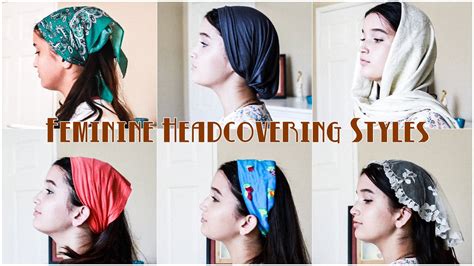Head coverings have been a part of human culture for centuries, worn for religious, cultural, and fashion reasons. For women, head coverings can range from simple scarves to elaborate hats, each with its unique style and purpose. In this comprehensive guide, we explore the vast world of head coverings for women, providing insights into their history, significance, and the wide variety of options available.

Historical Significance of Head Coverings
Head coverings have a rich history that spans across different cultures and religions. In ancient times, women often wore head coverings as a sign of modesty and respect. In many cultures, married women were expected to cover their heads to indicate their status.
In the Middle Ages, head coverings became a symbol of religious devotion. Christian women wore veils or wimples to cover their hair and necks, while Muslim women wore the hijab. These coverings served both as a religious obligation and a way to demonstrate adherence to certain beliefs.
Cultural Significance of Head Coverings
Head coverings continue to play an important role in many cultures around the world. In some societies, they are seen as a sign of respect for elders or religious figures. In others, they are worn to mark special occasions such as weddings or funerals.
Here are some examples of cultural head coverings:
- Hijab: A headscarf worn by Muslim women to cover their hair and neck
- Mantilla: A lace veil worn by Spanish women during religious ceremonies
- Kippah: A skullcap worn by Jewish men during prayer
- Turban: A wrap worn around the head by Sikh men and women
- Fascinator: A small, decorative headpiece worn by women at weddings and other special occasions
Fashion and Style
Head coverings have also become a popular fashion accessory. Women of all ages and backgrounds wear hats, scarves, and other head coverings to complement their outfits and express their personal style. From wide-brimmed sunhats to cozy beanies, there is a head covering for every taste and occasion.
Types of Head Coverings for Women
The sheer variety of head coverings for women is astounding. Here are some of the most common types:
- Hats: Hats come in a wide range of styles, from classic fedoras to stylish berets. They can be worn to protect from the sun, add warmth, or simply make a fashion statement.
- Scarves: Scarves are a versatile accessory that can be worn around the neck, head, or shoulders. They come in various fabrics, colors, and patterns, allowing for endless styling options.
- Veils: Veils are sheer fabrics that can be worn over the face or head. They are often associated with religious and cultural traditions but can also be used as a fashion accessory.
- Turbans: Turbans are wraps that are tied around the head to create a variety of looks. They are commonly worn in cultural and religious contexts, but they have also become a popular fashion trend.
- Headbands: Headbands are thin bands that are worn around the forehead. They can be used to keep hair in place, add a touch of detail to an outfit, or simply accessorize.
Benefits of Wearing Head Coverings
Wearing head coverings offers several benefits:
- Sun protection: Hats and scarves can provide protection from the sun’s harmful UV rays, reducing the risk of sunburn and skin damage.
- Warmth: Head coverings can help keep you warm in cold weather, preventing heat loss through the head and neck.
- Modesty and privacy: Some women wear head coverings for reasons of modesty or privacy, covering their hair or face in certain situations.
- Style and fashion: Head coverings can be a stylish and fashionable accessory, complementing outfits and adding a touch of personality.
Tips and Tricks for Wearing Head Coverings
Here are a few tips and tricks for wearing head coverings:
- Choose the right style: Consider the occasion and your personal style when selecting a head covering.
- Experiment with different ways to wear it: There are many ways to wear a head covering, so experiment to find the style that suits you best.
- Accessorize: Head coverings can be accessorized with jewelry, pins, or other details to add a personal touch.
- Take care of your head covering: Store your head coverings properly to protect them from damage and keep them looking their best.
Pros and Cons of Head Coverings
Pros:
- Protection from sun and cold
- Modesty and privacy
- Style and fashion
- Cultural and religious significance
Cons:
- Can be hot and uncomfortable in warm weather
- Can be seen as restrictive or oppressive in some cultures
- May not be suitable for all occasions
Conclusion
Head coverings for women are a diverse and multifaceted aspect of human culture and fashion. They have been used for centuries for religious, cultural, and fashion reasons, and continue to evolve with the times. Whether you wear a head covering for modesty, style, or protection, there is a wide range of options available to suit your needs and preferences.
